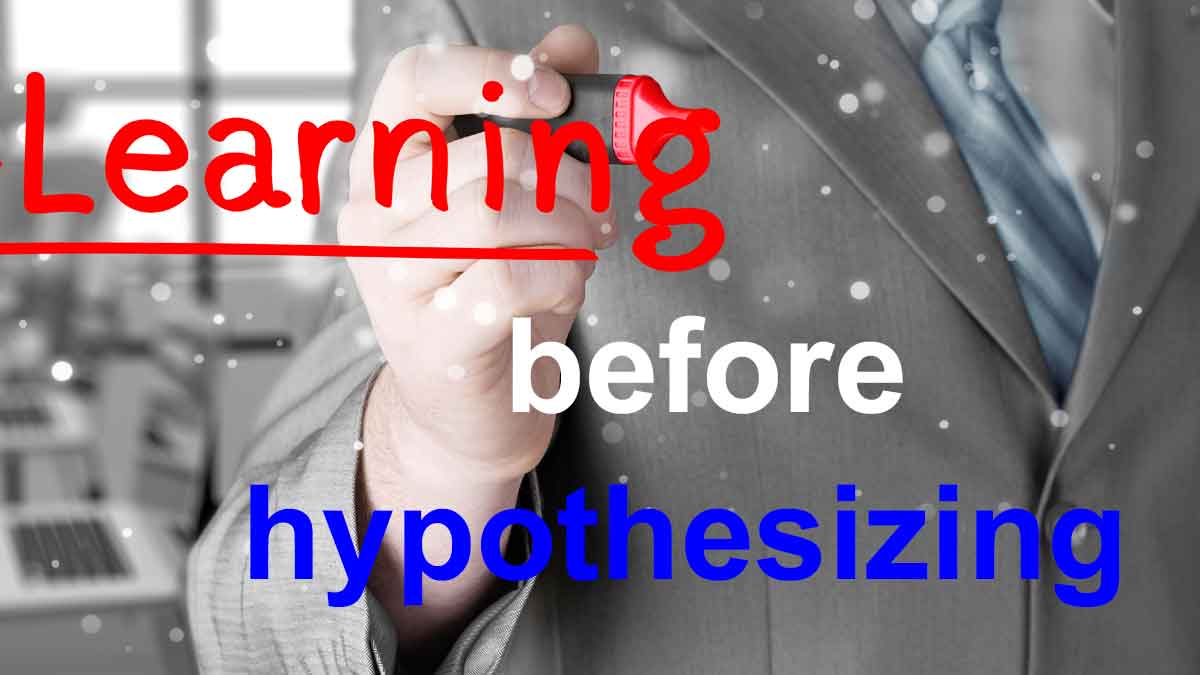The “Build-Measure-Learn” cycle in Lean Startup begins with a hypothesis, and is great for B2C. End-consumers can seldom tell you what will amuse them or increase their sense of self-worth. But knowledgeable B2B customer can predict their desired outcomes. So start with a “Learn” pre-step. Customers will tell you all you need if you know how to ask.
More in white paper, Lean Startup for B2B (page 3)
Consider three product development stages: front-end, development and launch. Most projects reach commercial certainty in the launch phase, as sales are monitored. But you can move this certainty to the front-end. Nearly all commercial uncertainty can be eliminated before development using the science of B2B customer insight.
More in white paper, Timing is Everything (page 6)
There are many forces dragging your products toward commoditization: competitors trying to imitate your products… purchasing agents trying to standardize your products… new technologies trying to obsolete your products. In your quest toward specialty products, you’ll get no outside help. You own this one, baby.
More in 2-minute video at 9. Avoid the commodity death spiral
B2B companies have huge advantages over B2C, but they may not be obvious. After all, didn’t the same fellow who bought a rail car of soda ash also buy a can of soda pop? Nope. He changed… a lot. B2B customers are more technically savvy, objective, supplier-dependent, and can predict their needs. Careful reflection of these differences leads to different approaches.
More in 2-minute video at 15. Put your B2B advantages to work
Isn’t a fill-in-the-blank customer questionnaire a bit… boring? If instead you keep asking, “Any other problems?”… you’ll have absolutely no idea what the customer will say next. Exhilarating? You bet. Uncomfortable? Perhaps… but only at first. With practice you’ll love it, and you’ll never go back.
More in e-book, Reinventing VOC for B2B (page 12)
Customers own “outcome” space. You own “solution” space. Don’t let them into your space… unless you want to become a contract manufacturer. Instead, enter their space to understand desired outcomes better than competitors. This lets you deliver unique value in your solutions, which is handsomely rewarded though premium pricing. The best way to do this? Use qualitative and quantitative interviews.
More in the video, Reinventing VOC for B2B
Tell me to increase shareholder value and I struggle to identify something I can do as an employee to raise earnings per share. Tell me to understand and increase customer value, and I can think of a dozen things to do, most of them actionable, measurable, and beneficial to our bottom line. Many of these I will find inspiring… as will others. Our research shows companies pursuing shareholder wealth grow slower than others.
More in Chapter 4 of Business Builders by Dan Adams
All growth-oriented innovation starts with customer outcomes. This is what customers want to have happen, with no understanding yet of how it will happen. Nothing a company does can achieve profitable, sustainable growth unless customer value is created… which comes only by improving these outcomes. Want to improve your new product success? Understand your customers’ outcomes in incredible detail.
More in 2-minute video at 22. Immerse your team in customer outcomes
Picture this: A customer tells your sales rep what they want, who hands it off to your R&D. This clever customer tells your competitors the same thing. Terrific. If more than one supplier crosses the finish line, you can forget any price premium. Try this: You choose the race conditions by targeting an attractive market, and exploring its needs better than competitors. This is one reason why market-facing innovation is superior to customer reactive innovation.
More in 2-minute video at 16. Segment by markets for innovation
It’s risky to incrementalize… but “great hope” projects often absorb huge resources and end with a whimper. What’s the answer? Get out more. Spend more time in customers’ worlds to reduce commercial risk. And reduce technical risk through open innovation, tapping into external technologies. You can’t thrive today without external insight. (Hmmm… “exsight”?)
More in 2-minute video at 42. Beware of New Product Incrementalism
Your company’s only path to profitable, sustainable, organic growth is understanding and improving customers’ important, unmet outcomes. Today this “understanding” is your best competitive advantage, simply because most B2B suppliers have far less customer insight than they could.
More in 2-minute video at 8. Rethink your major initiatives
If you’re asked to cross an unfamiliar chasm, would it be risky? Hard to say. Until you learn if you’ll face a bridge or a tightrope, you can’t assess risk (probability). You’re just uncertain. Many companies fear risk in an unfamiliar market, when they should map out a plan to reduce uncertainty. This is especially easy to do in B2B markets.
More in white paper, www.UnfamiliarMarkets.com (page 2)
Steve Jobs quoted Henry Ford, who said, “If I had asked people want they wanted, they would have said faster horses.’” But these men were end-consumers themselves, so they understood their markets. Most B2B suppliers, typically have much to learn about customer desired outcomes… and B2B customers are willing and able to tell them.
More in 2-minute video at 18. Avoid the faster horse fallacy
Good questions demonstrate you’re more interested in the other person than yourself. What do you call someone who listens to you and seems fascinated by your responses? You call them a brilliant conversationalist. Think of it this way: Your customers have a hard time getting their boss to listen to them. They go home and their kids don’t listen to them. Now a supplier (you) is leaning forward and asking, “Really? Could you tell me more about that?” If you were the customer, wouldn’t you like to talk to such a person?
More in white paper, Everyday VOC at www.EVOCpaper.com













